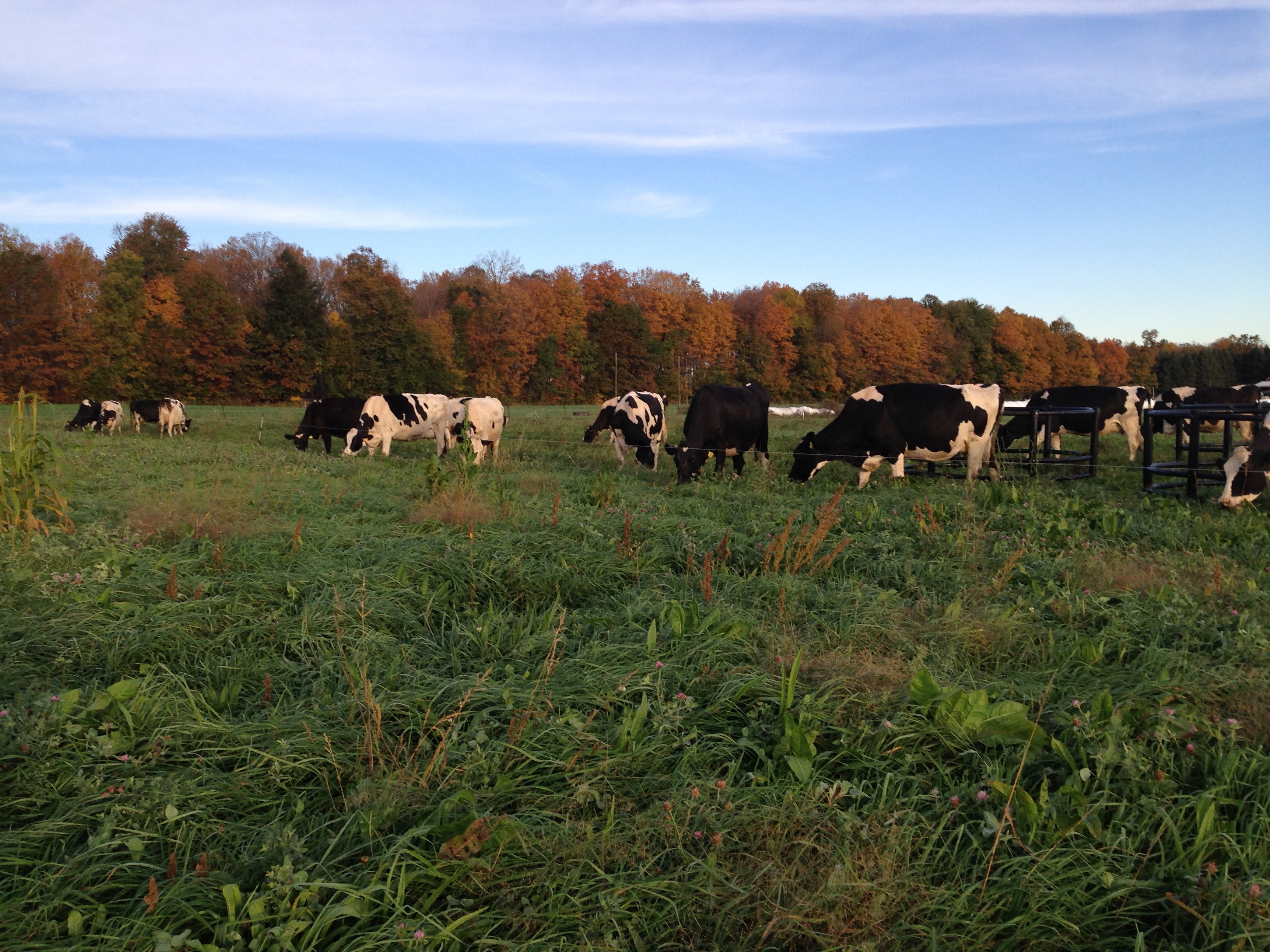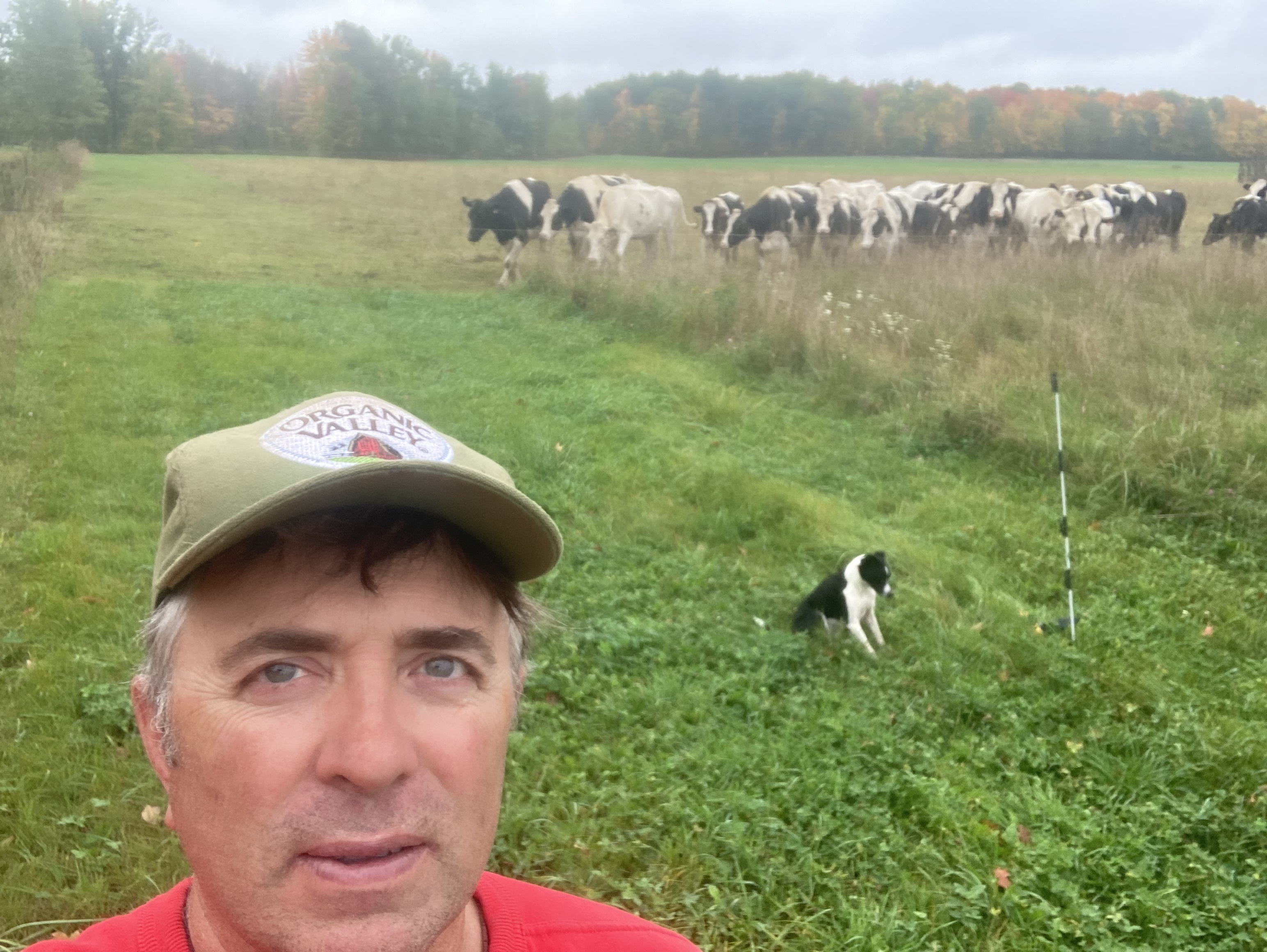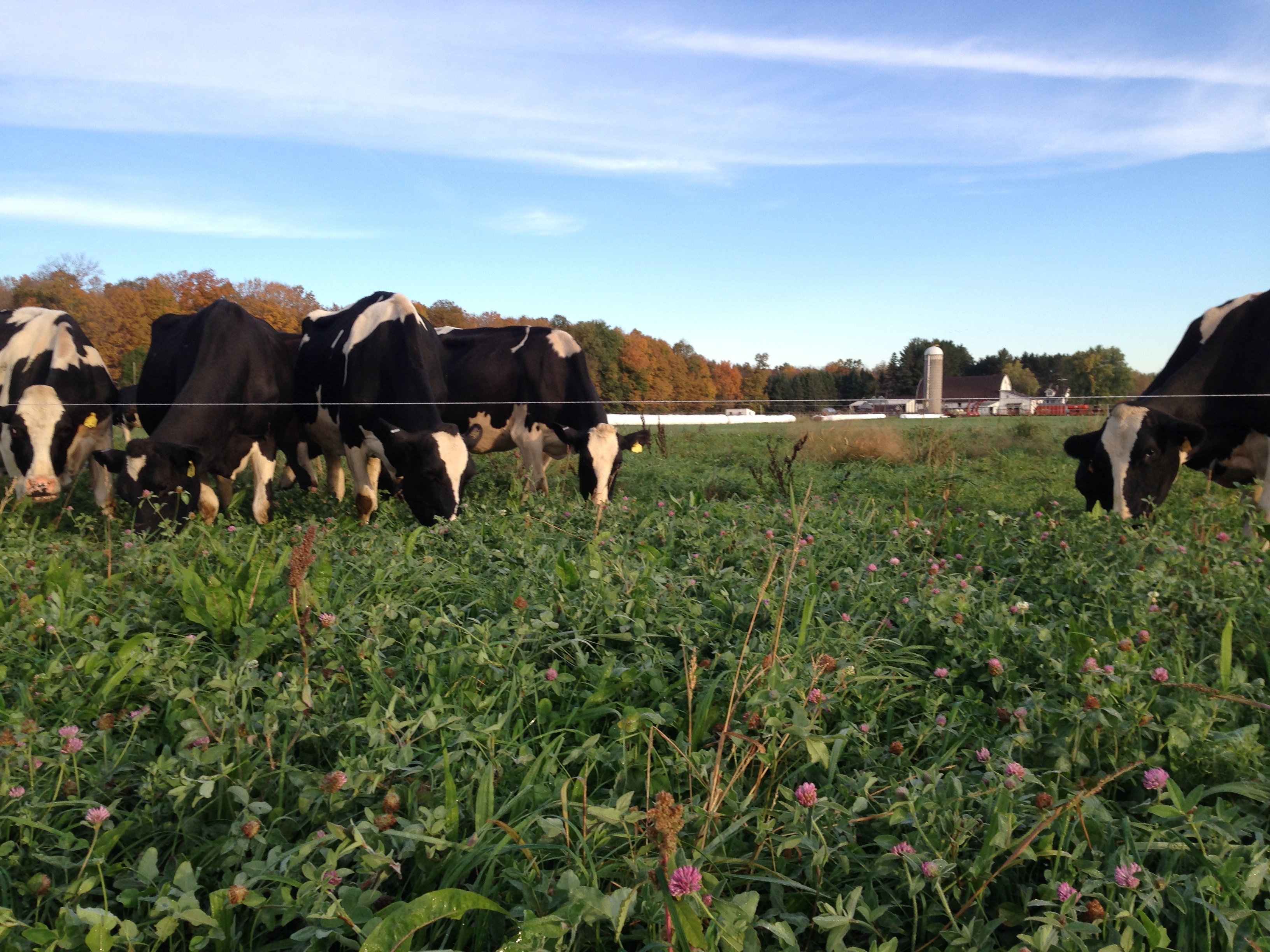Mahalko Dairy - Lessons in Grass Farming
Mahalko Dairy - Kevin Mahalko
Lessons in Grass Farming
By Joe Pedretti, Client Services Director

Kevin Mahalko farms 395 certified organic acres, a mix of managed pastures and some woodland managed for hardwoods that he may eventually use for organic maple syrup production. “I want to have everything that I am doing under organic management because I think it’s highly important,” emphasized Kevin. “I milk 45 purebred Holstein dairy cows that have been selected over the years for grazing, good feet and legs, deep bodies, and strong frames. Body condition is a big concern with Holsteins on grass, you have to have the right genetics, and my cows can keep good condition even on 100% grass. The World Dairy Expo is going on right now, and these are not those tall, bony show cows,” chuckled Kevin.
“I choose Holsteins, even though some other graziers use smaller breeds or cross-breeds, because Holsteins have the most developed and most available genetic base. We’ve been farming Holsteins in our family since the 1800s, so it was a heritage thing too. I only use AI (artificial insemination) on my herd, so by selecting for grazing, good production, and better milk components I have a herd that does really well. I believe that with good genetics, combined with good soils and good grazing management you can definitely do well with Holsteins. Any breed can be selected out for good grazing.”
“I work with a good breeding company (Genex) and we score the cows, do a mating assessment, and select for good udders, good feet and legs, and that is money well spent since you have so much money tied up in raising them. If you start with good potential, it doesn’t guarantee that they will all be good, but definitely a high percentage of them are. AI breeding is a definite advantage for farmers.”
“Our average cow's age is about six years. When I went to full grass, I would breed my heifers at least six months to a year later than the industry usually does. Waiting a little longer to breed young heifers gives them a chance to fill out better and they typically last longer in production. My cow’s last about eight years in production, although I have some that are as old as 12, maybe 13 years. I think waiting longer to breed really helps them maintain body condition,” noted Kevin.
“I switched to once a day milking about two years ago. The biggest reason for changing from two times a day was time. I do a lot of educational work with Grassworks (note: Kevin is currently President of the Grassworks Board), Marbleseed and River Country RC&D. Being able to do my off farm consulting activities was important. The other thing is that Holsteins are capable of holding more milk, so they can adapt pretty well to once a day milking. They definitely dropped a little in production, but the components went up enough to offset that. My rolling herd average is 10.5 and butterfat is 4.4 to 4.5 and protein has been around 4.1. That’s up quite a bit from doing twice a day milking. I am on the Organic Valley Grassmilk truck and that has been one of the drivers for my decision making. If I am not feeding corn silage and grain, we can’t get that high production, we dropped about 5000 pounds after dropping grain (15,500 to 10,600 lbs). That is offset by the grassmilk premium and the higher components.”
“My family has always had pastures. During my childhood we had some five acres pastures that we would move the cows around every two weeks. We were also supplementing with green chop every day. So we’ve always had a pasture component but during the 80s drought hay was too short to chop, so we dedicated more acres to grazing. That was an emergency thing, but we saw the potential. I went to college at Stevens Point in the early 90s and I went to one of the first few Grassworks conferences. There was a huge turnout of farmers and there was a lot of interest in the New Zealand style grazing system. It was a revolution I thought, and it was in a lot of ways. One of my neighbors started grazing and I went to local pasture walks and met up with a great group of local people interested in grazing. We were fully management intensive grazing on the farm by 1995. By the late 90s we started hearing about organic production. While grazing alone allowed you to be more efficient, we needed to get better milk prices. We started hearing about what Organic Valley was doing and it was pretty appealing. By 2001 I had started managing some fields organically and by 2003 decided to transition. We got certified organic in 2011. We were ready to go in 2009, but there was a wait for quotas around that time. It was great once we got on the organic truck.”

“In 2006 I started as a grazing specialist with the River Country RC&D, and I am still with them. I have seen a lot of growth and farm success and learned a lot about grazing. My farm is in the north central part of Wisconsin on heavy silt loam soils. Historically this is what was known as the ‘clover belt.’ Clover grows really well and there is a huge seed bank. Graziers have often said ‘plant fence posts and manage what comes.’ I think that’s still my dominant thinking- graze what grows and manage it well. I think the biggest improvement over the years has been the seeds available. There are many better choices now for species and varieties. I do a mix of no-tilling into pasture and new seeding in the areas where we outwinter. I will use a custom grazing blend. I really like the Grassworks mixes. I tend to blend mixes together for even more variety. I like the diversity mix with meadow fescue, perennial ryegrass, and I mix in timothy, white and red clover, alfalfa, trefoil, chicory, plantain, forage variety Kentucky bluegrass, and a little festulolium. I also get volunteer quackgrass, meadow brome, bluegrass, plantain, and legacy clover. With good fertility, and the right lime in the right range for pH, that mix grows really well and yields well in a variety of conditions,” noted Kevin.
“My pasture management has changed since the early days. Then you put the cows in at eight inches and left two inches for regrowth. The goal was to move as often as possible. I found that you had to supplement fiber to do that. We were feeding fiber with our grain to slow down the rumen. If you want to go pure grazing, it is better to start grazing somewhat taller. I try to go in at 15 inches. You get more density, more root development and a better fiber/energy balance. The cows have better rates of passage and firm cow pies. They get less foot problems, less acidosis and lower MUNs. Maintaining mature and taller pastures works better for me and with the right rain, I average about 35 days between grazings. By then all of the manure is incorporated so parasite levels are lower too. I have permanent lanes and water lines with big paddocks that I divide with poly wire as needed. That gives me a lot of flexibility.”
“If we have good rain, grass grows like crazy here in May and June. My Dad Ken, who still helps a lot on the farm, and I will clip and put up bedding and hay from whatever the cows can’t eat. I don’t have a bedding pack and outwinter my cattle as much as possible. I do have stalls and mats for the cows. We feed some in the barn, usually haylage or baleage. Out in the pasture I set up feeder wagons with large square bales. What I like about that is being able to pull them from one spot to another to spread out the fertility. If it’s going to be muddy, I pre-place 10-15 bales where I want them and then I just move the poly wire. I do try to stockpile some paddocks for grazing in the winter. With the right weather, I can get them grazing in December and even January,” said Kevin.
“Organic production is really important to me. The whole community aspect. The democratic voice. Farmers engaged in making the rules. Listening to consumers. Then you tie that in with protecting the environment and treating animals with care and you have a real community. There are just so many factors about organic that are positive. It is important to me to remain committed to supporting organic grass based systems beyond just the day to day farming. I still remember my first Grassworks conference. That was the first conference where everyone was happy, engaged, cooperative and listening to one another. Add in organic principles and cooperative marketing and you have the peak of what this community can be. Farming doesn’t have to be this competitive thing.”


